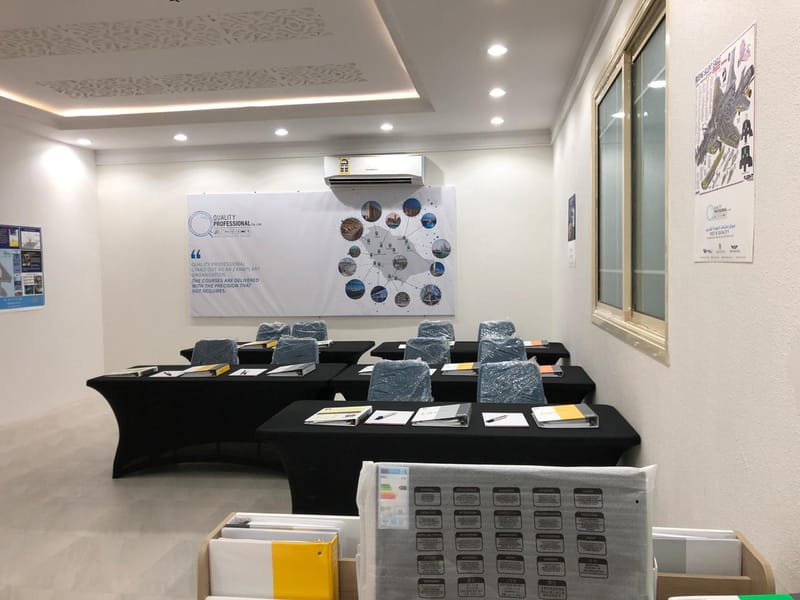Types of examination and training

1. Ultrasonic Training (UT)
Ultrasonic Testing (UT) uses high frequency sound energy to manage and do examinations and make measurements. Ultrasonic (careful examination of something) can be used for flaw detection/ evaluation, dimensional measurements, material description, and much more. Although there are some technologies employing ultrasound, the simplest explanation of what happens in this method is that sound energy is introduced via transducer and transmit through the materials in the form of waves.
When there is an (instance where things are uneven and interrupted) (such as a crack) in the wave path, part of the energy will be reflected back from the flaw surface. The reflected wave signal is changed into an electrical signal by the transducer and is displayed or recorded in a variety of ways. Both surface and subsurface defects can be detected making ultrasonic a volumetric testing method. Uses change/differ in complex difficulty from very small, hand-held manual units to very large, fancy (or smart) automated systems.
This method is used to inspect a variety of product forms including castings, forming/creating, and weldments. The (related to what holds something together and makes it strong) steel, automotive, (related to oil from the ground), power generation, and outer space businesses are a few examples that use ultrasonic (careful examination of something).
2. Magnetic Particle Training (MT)
Magnetic Particle (careful examination of something) is a nondestructive testing method used for detecting surface and near surface flaws and defects. MPI is fast and (compared to other things) easy to apply, and surface preparation is not as critical as it is for other NDT methods. These (features/ qualities/ traits) make MPI one of the most widely used nondestructive testing methods.
MPI uses magnetic fields and small magnetic particles almost the same as iron filings to detect flaws in parts/pieces. The only real limitation is that the part being inspected must be made of a ferromagnetic material such as iron, nickel, cobalt, or one of their mixtures (of metals). The method is used to inspect a variety of product forms including castings, forming/creating, and weldments.
The (related to what holds something together and makes it strong) steel, automotive, (related to oil from the ground), power generation, and outer space businesses are a few examples that use magnetic particle (careful examination of something). Underwater (careful examination of something) is another area where magnetic particle (careful examination of something) may be used to test items such as offshore structures and underwater pipelines.
3. Liquid Penetrant Training (PT)
Liquid penetrant (careful examination of something) is a nondestructive testing method that shows/tells about surface breaking flaws by bleedout of a penetrating liquid colored with a visible or fluorescent dye from the flaw. The way of doing things is based on the ability of a liquid to be drawn into a "clean" (in other words, unobstructed) surface breaking flaw by (liquids moving up very thin tubes).
After the right/ the proper period of time for penetration has elapsed, called the "dwell time," excess penetrant on the surface is removed and a developer applied. The developer acts as a blotter and draws the penetrant from the flaw to show its presence. Penetrants with a visible dyed added (color contrast) require (good) enough white light to insure proper (careful examination of something), while penetrants with a fluorescent dye added need to be used in darkened conditions with an ultraviolet or "black light".
This method is used to inspect a variety of product forms including castings, forming/ creating, and weldments. The (related to what holds something together and makes it strong) steel, automotive, (related to oil from the ground), power generation, and outer space businesses are a few examples that use liquid penetrant (careful examination of something).
4. Radiographic Training (RT)
Industrial Radiography or Radiographic Testing (RT) uses ionizing (related to electricity producing magnetic fields) radiation to view objects in a way that can't be seen otherwise. It is not to be confused with the use of ionizing radiation to change or change objects; radiography's purpose is strictly for viewing. It is a method of inspecting materials for hidden flaws by using the ability of short wavelength (related to electricity producing magnetic fields) radiation, x-rays and gamma radiation, to penetrate different materials.
Gamma radiation sources, most commonly Iridium-192 and Cobalt-60, are used to inspect a variety of materials. Almost all radiography concerns the testing and grading of welds on pressurized piping, pressure (strong containers), high-ability (to hold or do something) storage containers, pipelines, and some (related to what holds something together and makes it strong) welds. Other tested materials include concrete (locating rebar or pipe/pathway), welder's test coupons, machined parts, plate metal, or pipewall (locating (weird, unexpected things) due to (slow chemical breakdown of something/rust, etc.) or mechanical damage). Probably (but not definitely), industrial radiographers could radiograph any solid, flat material (walls, ceilings, floors, square or rectangular containers) or any hollow tube-like or spherical object.
5. Eddy Current Training (ECT)
Eddy Current inspection (ET) is one of several NDT methods that use the principal of electromagnetism as the basis for conducting examinations. Eddy current testing equipment performs three basic functions: generating, receiving, and displaying. The generating portion of the unit provides an alternating current to the test coil creating eddy currents through a process called electromagnetic induction. The receiving section measures impedance and processes the signal from the test coil to the required form and amplitude for display. Instrument outputs or displays consist of a variety of visual, audible, storage, or transfer techniques utilizing meters, video displays, chart recorders, alarms, magnetic tape, computers, and electrical or electronic relays.
One of the major advantages of eddy current as an NDT tool is the variety of inspections and measurements that can be performed. This inspection method is sensitive to small surface cracks, pits, subsurface cracks, corrosion on inner surfaces, and other flaws and is used to inspect parts of complex shape and size. ET gives immediate results and is widely used within the commercial, military, petrochemical, aircraft and aerospace industries. In the proper circumstances, eddy current can also be used for material or coating thickness measurements, heat damage detection, and conductivity measurements for material and alloy identification.
`


